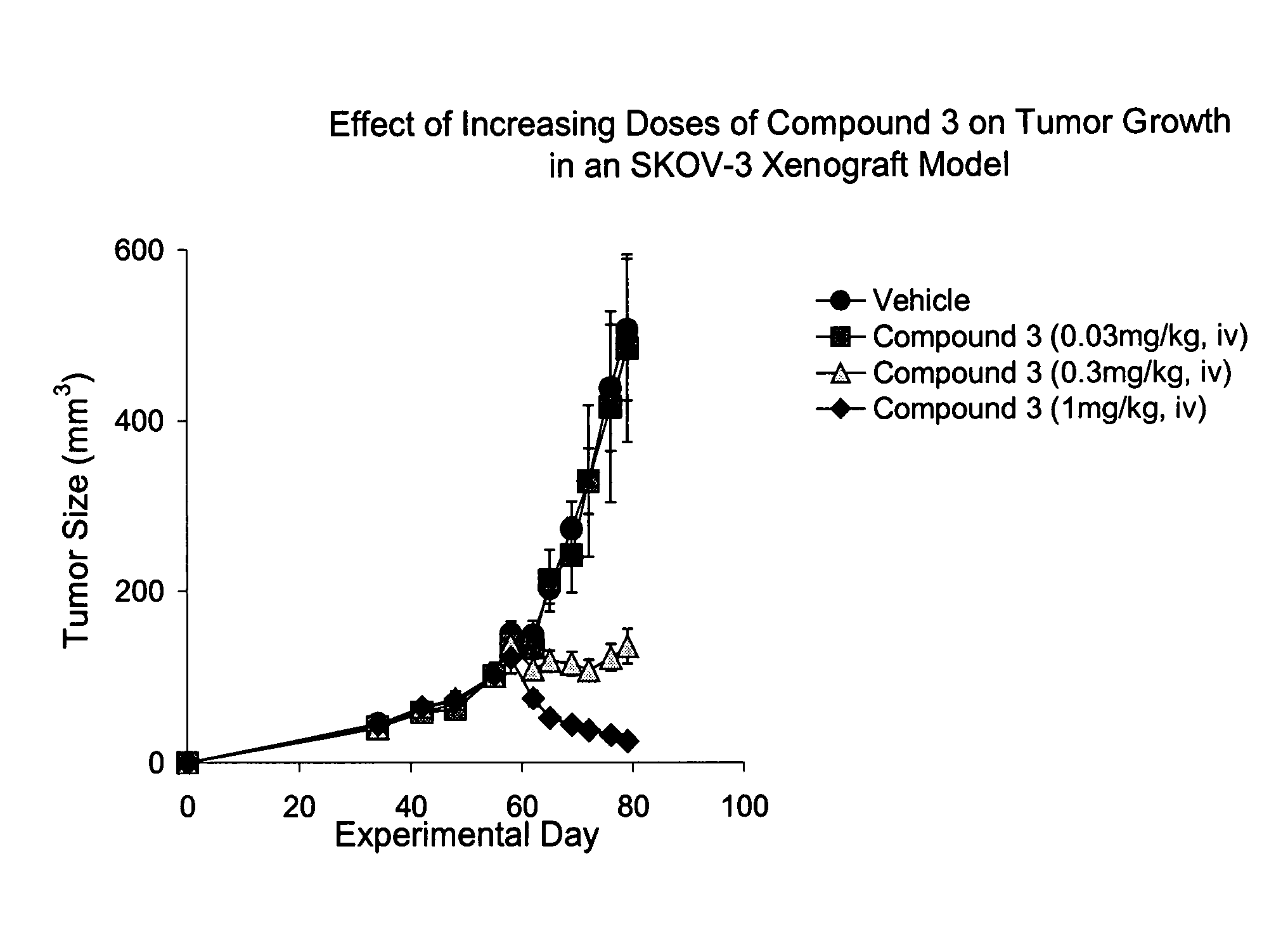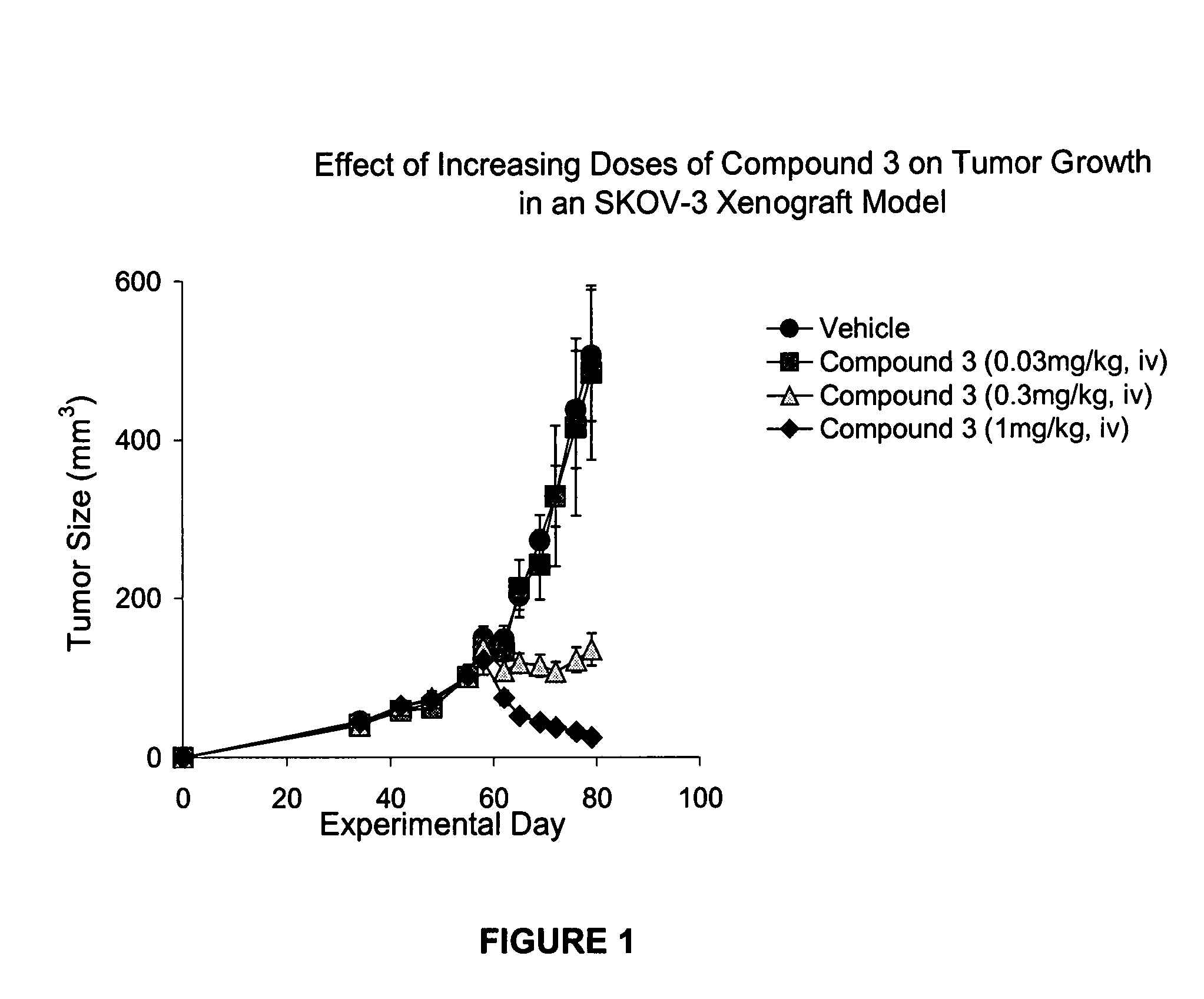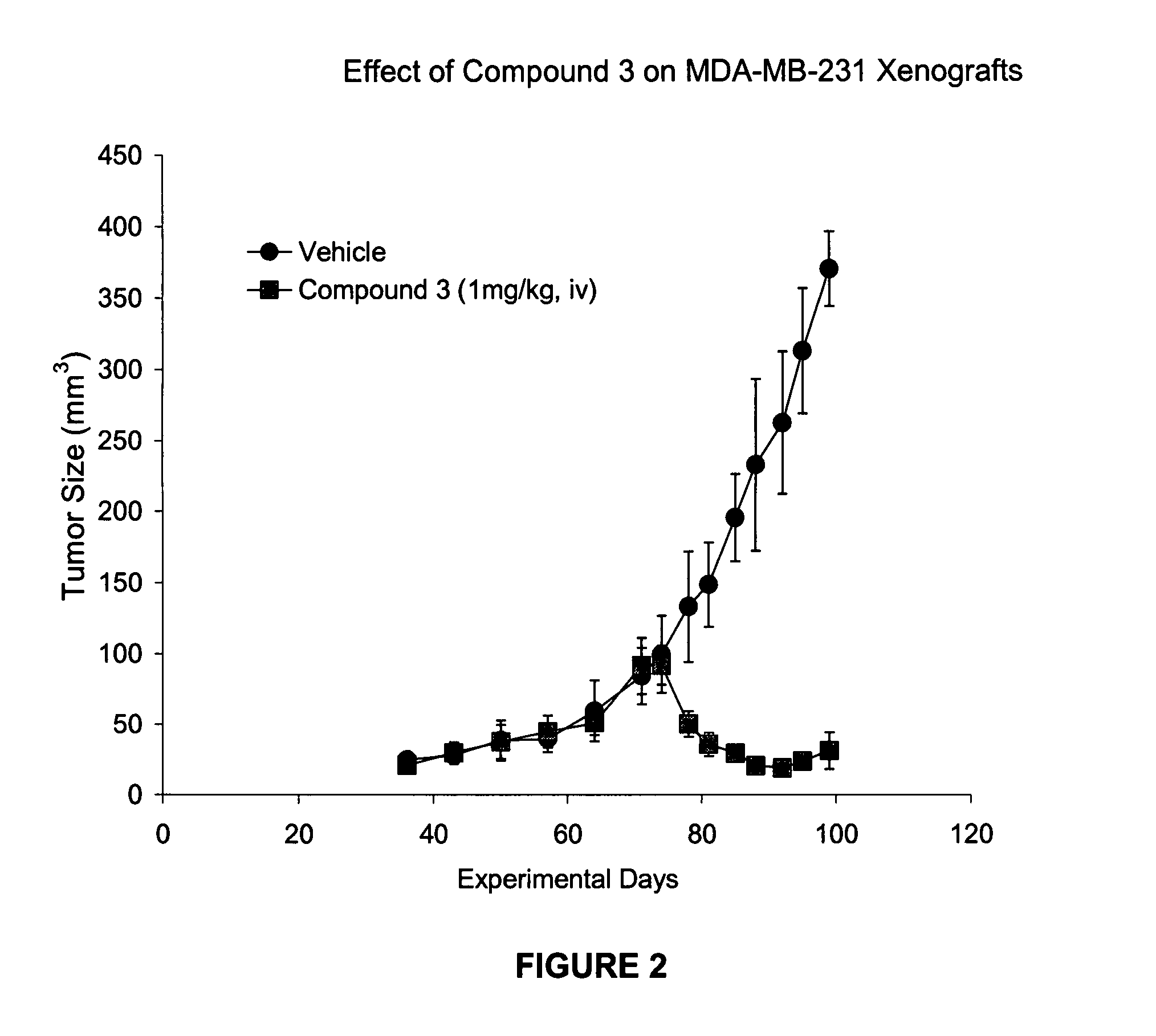IAP bir domain binding compounds
a domain binding and bir technology, applied in the field of bridged compounds, can solve the problems of compound poor in-vivo activity, poor clinical prognosis and survival, and additional cellular injury, and achieve the effects of adequate solubility and bioavailability, increased potency, and pharmaceutically acceptable stability
- Summary
- Abstract
- Description
- Claims
- Application Information
AI Technical Summary
Benefits of technology
Problems solved by technology
Method used
Image
Examples
examples
[0740] The following abbreviations are used throughout:
Boc: t-butoxycarbonyl;
CBz: benzyloxycarbonyl;
DCM: dichloromethane, CH2Cl2;
DIPEA: diisopropylethylamine;
DMAP: 4-(dimethylamino)pyridine;
DMF: N,N-dimethylformamide;
DTT: dithiothreitol;
EDC: 3-dimethylaminopropyl-3-ethylcarbodiimide hydrochloride;
EDTA: ethylenediaminetetracetic acid;
Fmoc: N-(9-fluorenylmethoxycarbonyl);
HBTU: O-(benzotriazol-1-yl)-N,N,N′,N′-tetramethyluronium hexafluorophosphate;
HCl: hydrochloric acid;
HOAc: acetic acid;
HOBt: 1-hydroxybenzotriazole;
HPLC: high performance liquid chromatography;
LCMS: liquid chromatography-mass spectrometer;
MeOH: methanol;
MS: mass spectrum;
NaHCO3: sodium hydrogen carbonate;
Pd / C: palladium on carbon;
TEA: triethylamine;
THF: tetrahydrofuran; and
TMEDA: N,N,N,N-tetramethylethylenediamine.
Synthetic Methods
Synthesis of compound 1
Step 1: Intermediate 9-1
[0741] NaH (440 mg, 11.0 mmol) was suspended in dry DMF (5 mL) u...
PUM
 Login to View More
Login to View More Abstract
Description
Claims
Application Information
 Login to View More
Login to View More - R&D
- Intellectual Property
- Life Sciences
- Materials
- Tech Scout
- Unparalleled Data Quality
- Higher Quality Content
- 60% Fewer Hallucinations
Browse by: Latest US Patents, China's latest patents, Technical Efficacy Thesaurus, Application Domain, Technology Topic, Popular Technical Reports.
© 2025 PatSnap. All rights reserved.Legal|Privacy policy|Modern Slavery Act Transparency Statement|Sitemap|About US| Contact US: help@patsnap.com



